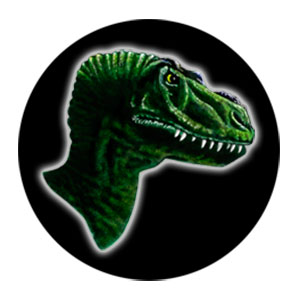
MENU

Dinosaurs
Soft Tissue From Dinosaur Bones1
1991
The Journal of Paleontology reported on one of the largest dinosaurs ever discovered—Seismosaurous. In the description of the Seismosaurous remains, the author admits—although in a veiled manner—that bone and bone protein is present (Gillett, 11:417-433).
1992
Dr. Margaret Helder reported two cases of “fresh” dinosaur bones that were discovered in Alaska. In her report she asked: “How these bones could have remained in fresh condition for 70 million years is a perplexing question. One thing is certain: they were not preserved by cold. Everyone recognizes that the climate in these regions was much warmer during the time when the dinosaurs lived” (14:16, emp. in orig.).
Also in 1992, an article appeared in Geology journal titled: “Preservation of the Bone Protein Osteocalcin in Dinosaurs.” In this report Gerard Muyzer and his colleagues used a procedure known as polymerase chain reaction (PCR) to amplify a bone protein from two Cretaceous dinosaurs (20:871-874).
1994
Scott Woodward and his colleagues wrote an article titled: “DNA Sequences from Cretaceous Period Bone Fragments.” In their report, the authors remarked: “DNA was extracted from 80-million-year-old bone fragments found in strata of the Upper Cretaceous Blackhawk Formation in the roof of an underground coal mine in eastern Utah (p. 1229). They continued: “On the basis of the circumstantial physical and geologic evidence, it is likely that the bone fragments belong to a Cretaceous period dinosaur or dinosaurs” (p. 1230, emp. added.).
1997
An article titled “Heme Compounds in Dinosaur Trabecular Bone” was published (see Schweitzer, et al., 94:6291-6296). Heme is one of the constituents of hemoglobin—a respiratory protein found in red blood cells, which is responsible for gas exchange in living organisms. This study demonstrated blood-derived hemoglobin compounds were still in the dinosaur tissue.
March 2005
“Paleontologists were stunned to find that the soft tissue of a...dinosaur was preserved within a fossil from a Tyrannosaurus rex” (Boyle, 2007, emp. added). Dr. Mary Schweitzer and her colleagues reported the find in Science magazine, describing the demineralized T. rex femur and tibia fragments as “highly fibrous,” “flexible,” and so “resilient” that “when stretched, returns to its original shape.” Amazingly, the researchers were even able to squeeze round, dark-red-to-deep-brown microscopic structures from the presumed T. rex blood vessels. Scientists were shocked! “Such a thing had never been seen before” (Boyle, 2007). How could a “70-million-year-old” Tyrannosaurus rex bone still contain soft tissue?2
It seems that no amount of "hard" evidence will be able to convince those with a macro-evolutionary commitment to rethink their millions-of-years timetable.
"If creationists are right, dinosaurs died off only 3,000–4,000 years ago. So would we expect the preservation of vessels, cells, and complex molecules of the type that Scientists are reporting for biological tissues historically known to be 3,000–4,000 years old?
The answer is yes. Many studies of Egyptian mummies and other humans of this old age (confirmed by historical evidence) show all the sorts of detail Dr. Schweitzer reported in her T. rex. In addition to Egyptian mummies, the Tyrolean iceman, found in the Alps in 1991 and believed to be about 5,000 years old, shows such incredible preservation of DNA and other microscopic detail."3
Common Stories From Many Cultures
Ancient people around the world tell stories about large reptile-like creatures. It is highly unlikely that so many different people groups all over the world could dream up similar stories of beasts that so closely match the animals now known as dinosaurs.
Curious Cave Drawings
Cave drawings in several locations appear to include dinosaur-looking creatures.
Curious Science Book
In the 1500s, a European scientific book, Historia Animalium, listed several animals that we would call dinosaurs, as still alive.
Curious Accounts
Descriptions of large animals by people living in the jungles of Africa appear to describe dinosaurs.
Why did they die out?
Dinosaurs may simply have become extinct due to climatic changes just like millions of other animals whose existence is known only through the fossil record.
Massive Graveyards
Another fact that is unexplainable by evolution is that, quite often, dinosaur bones are found in massive piles made up of millions of animals. This pattern is found worldwide and is strong evidence that a global catastrophe involving flooding and geologic upheavals produced these large dinosaur graveyards.4

Scientists have been able to squeeze round, dark-red-to-deep-brown microscopic structures from the presumed T. rex blood vessels as well as other dinosaur bones—and yet, they still think Dinosaurs died out 65 million years ago!
- Apologetics Press (http://www.apologeticspress.org/apcontent.aspx?category=9&article=1527)
- Apologetics Press article by Eric Lyons, M.Min. (http://www.apologeticspress.org/APContent.aspx?category=9&article=1422&topic=59)
- https://answersingenesis.org/fossils/3-soft-tissue-in-fossils/
- Taylor, Paul S. The Illustrated Origins Answer Book (Mesa, Arizona: Films For Christ Association, 1989), p. 45.
Design, graphics and artwork copyright © 2016 Tim Beasley • All rights reserved.